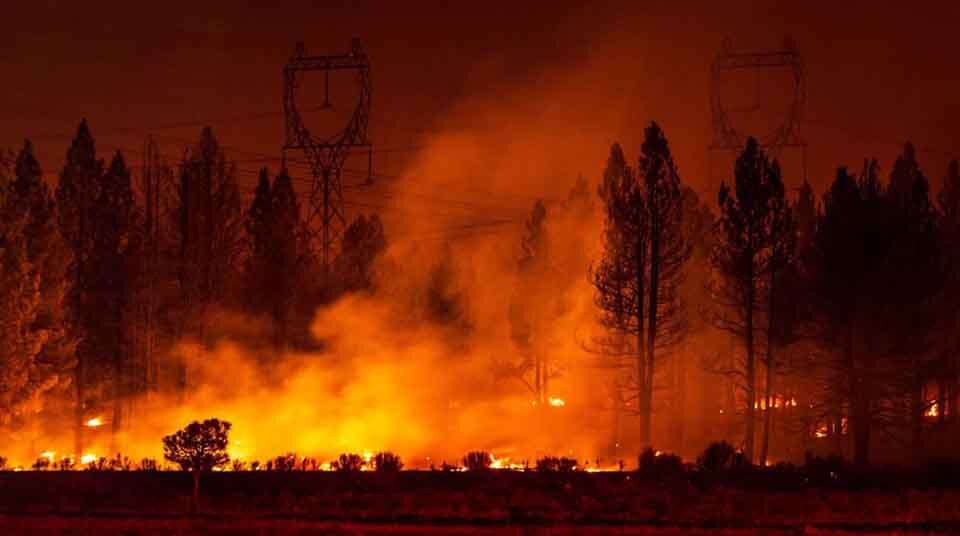Oregon Wildfires Could Trigger Cancer, Reveals A New Study

Reporting a blistering 54,273 fires so far nationally in 2023, the National Interagency Fire Center is currently fighting 3 wildfires in Oregon- the Chilcoot fire in Douglas and the Grizzly fire next door in Lane County, as well as the Camp Creek fire further north in Clackamas County.
Polluting the air with dense smog and damaging homes, wildlife, and habitat, research has been centered on the contribution that gases and particles carried by wildfires make to the environment. Studies on the impact wildfires could have on metals inherent in soil and plants have been given less attention.
Related: Ashland To Be The Center Of Wildfire Resilience Research
Chromium- a chemical element with the symbol Cr, is classified as a transition metal, and is commonly found in soils across the globe, including in the western parts of the United States, Australia, Brazil, Europe, and other countries. Many people learned of its dangers through the Julia Roberts movie, Erin Brockovich (2000) in which a legal assistant takes on a corporation that is suspected of contaminating the water of rural Hinkley, California. The court case hinges on the effects of the metal to the increased cancer and death rates in the town.
In its benign form- called chromium 3, the metal limits the uptake of nutrients in soil but particular organic chemical processes can transform the metal into a carcinogen called hexavalent chromium, or chromium 6. Cancer, organ damage, and other health problems traced to connect with this metal have been found to occur.
Circulated from Australia in 2019, an academic paper established that the severe heat generated by wildfires could be a trigger for this metamorphosis. Probing this hypothesis, Stanford researchers then investigated, presenting their results in the journal Nature Communications in December. Analyzing soil samples from the earth of four environmentally protected reserves- where substantial deposits of chromium are found, the scientists collected ground soil from areas where dense vegetation had facilitated fires burning fiercely over a long time. Earth scorched by wildfires in 2019 and 2020 in California’s North Coast Range was scoured. Samples from sections that had burned and control samples from sections saved from the fires were sourced.
By splitting off the tiniest particles that would in all probability become airborne from the chromium-rich areas where the study took place, toxic chromium levels- approximately seven times higher than pristine sections, were found in the scorched parts. Even after a fire is extinguished, strong winds carry fine particles of the chromium-laced soil downwind, exposing communities to this potentially hazardous metal.
Scott Fendorf, co-author of the Stanford study- and professor at the Stanford Doerr School of Sustainability highlighted how the searing heat of wildfires potentially transforms the metal chromium, from its innocuous state into hazardous floating particles, putting firefighters and local inhabitants at risk.
“In the complex mixture of gasses and particles that wildfires spew out as smoke and leave behind as dust, heavy metals such as chromium have largely been overlooked,” Fendorf indicated in a press release.
According to him, the health risk generally wanes considerably after the first big rainfall flushes metals away, but it could take weeks or even months for it to rain after a wildfire, particularly because of the effects of climate change, which increases the prospect and the frequency of drought.
When the samples were taken for the Stanford study, California was experiencing a multi-year significant drought. In the absence of rainfall necessary to wash away the chemical pollutant, on their return almost a year later, the researchers found that toxic chromium remained in the soil, and still posed health risks for nearby residents.
An epidemiologist at Scripps Institution of Oceanography with a specific interest in the effects of climate change Tarik Benmarhnia- who studies the consequences of wildfire smog, stated that the recent findings are an important piece of evidence. “This kind of metal composition explanation is complementary to what we already know and is definitely going to help us understand the health impacts in human populations,” said Benmarhnia, who is independent of the Stanford study.
An expanding body of evidence against the dangerous effects of wildfire smoke shows that it transports fine granular material- or PM 2.5, a minute but dangerous pollutant. Transiting deep into lung tissue and occasionally into the bloodstream, when inhaled, PM 2.5 has been tied to several health issues such as heart disease, asthma, heart chronic bronchitis, and additional respiratory conditions.
Nanoparticles of several other metals- such as manganese, nickel, and iron could pose similar health risks according to scientists, but more research is necessary. Stanford professor Fendorf says, “What we see our work really doing is helping amplify the knowledge of what kind of toxins can be in the wildfire smoke,”
To find out about fires raging in Oregon in real time- and that could pose a health risk, go to the Oregon Wildfire Map.

Comments are closed.